 Bob Dylan. Ludwig van Beethoven. William Shakespeare. Steve Jobs. These are historical figures of staggering creative genius that we often think of as freaks of nature. That their creative talent is a God-given gift, or some biological mutation that only affects a handful of special people. But new research is beginning to shed light on the science behind creativity and imagination. As it turns out, anyone can be creative.
Bob Dylan. Ludwig van Beethoven. William Shakespeare. Steve Jobs. These are historical figures of staggering creative genius that we often think of as freaks of nature. That their creative talent is a God-given gift, or some biological mutation that only affects a handful of special people. But new research is beginning to shed light on the science behind creativity and imagination. As it turns out, anyone can be creative.
“Creativity shouldn’t be seen as something otherworldly. It shouldn’t be thought of as a process reserved for artists and inventors and other ‘creative types.’ The human mind, after all, has the creative impulse built into its operating system, hard-wired into its most essential programming code,” writes Jonah Lehrer in his new book Imagine.
In his book, Lehrer examines the inner workings of what we call imagination. He looks at the neuroscience behind sudden insights, how the brain solves different kinds of problems and which personal traits help foster creativity. He also shares how external forces factor into the creative process, how to design a workspace to enhance your chances of having an epiphany, why creativity tends to bubble up in certain places and how we can encourage our collective imaginations.
Above all, though, the message of Lehrer’s book is that creativity is not a super power. Anyone can be creative — it just takes hard work. “We should aspire to excessive genius,” says Lehrer, who took some time from his book tour to sit down with Mashable and answer a few questions about the mysteries of how we imagine.
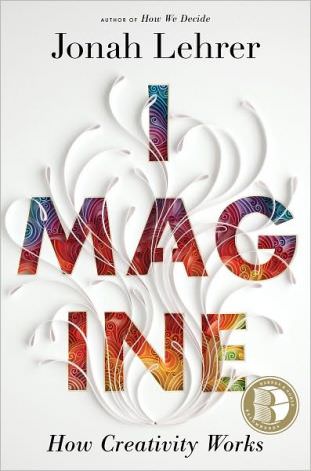 Can creativity really be taught?
Can creativity really be taught?
For sure. Creativity is not some gift of the gods. While there are going to be inevitable differences in raw talent — human performance is a bell curve — that doesn’t mean we can’t all learn to become more creative. The imagination can be improved.
Yo-Yo Ma says his ideal state of creativity is “controlled craziness.” How can we learn to harness that?
What Yo-Yo Ma is referring to is the kind of creativity that occurs when we let ourselves go, allowing the mind to invent without worrying about what it’s inventing. Such creative freedom has inspired some of the most famous works of modern culture, from John Coltrane’s saxophone solos to Jackson Pollock’s drip paintings. It’s Miles Davis playing his trumpet in Kind of Blue — most of the album was recorded on the very first take — and Lenny Bruce inventing jokes at Carnegie Hall. It’s also the kind of creativity that little kids constantly rely on, largely because they have no choice. Because parts of the brain associated with impulse control remain underdeveloped, they are unable to censor their imagination, to hold back their expression. This helps explain the truth in that great Picasso quote: “Every child is an artist. The problem is how to remain an artist once we grow up.”
“It turns out that that we can recover the creativity we’ve lost with time. We just have to pretend we’re a little kid.”
And yet, there’s some good evidence that we can recover the creativity we’ve lost with time, that we can learn to think again with the “controlled craziness” celebrated by Ma. Take this clever experiment, led by the psychologist Michael Robinson. He randomly assigned a few hundred undergraduates to two different groups. The first group was given the following instructions: “You are 7 years old, and school is canceled. You have the entire day to yourself. What would you do? Where would you go? Who would you see?” The second group was given the exact same instructions, except the first sentence was deleted. As a result, these students didn’t imagine themselves as seven year olds. After writing for ten minutes, the subjects were then given various tests of creativity, such as trying to invent alternative uses for an old car tire, or listing all the things you could do with a brick. Interestingly, the students who imagined themselves as young kids scored far higher on the creative tasks, coming up with twice as many ideas as the control group. It turns out that that we can recover the creativity we’ve lost with time. We just have to pretend we’re a little kid.
I often feel like I have great ideas while taking a shower or just after waking up, which is normal, according to your research — we’re more receptive to insights when relaxed. But I have a terrible time remembering any of those great ideas. Do you have any tips for retaining those insights? How do we stay aware enough to remember what we come up with while daydreaming?
I have the same problem! I wish there was a simple fix. But the unfortunate answer is that we need to practice. Productive daydreaming is an important skill, which is why people who daydream more (and can maintain awareness within the daydream) score much higher on tests of creativity. If it were up to me, we’d teach kids how to effectively mind-wander in school.
How do you encourage fruitful collaboration in the workplace? When teams get too close they become too comfortable, and that stifles innovation, but when they’re too far apart they don’t work well together. How do you find the sweet spot?
“The next time you’re assembling a creative team, be sure to seek out the fresh voice.”
Look for your Stephen Sondheim. Let me explain.
Brian Uzzi is a marvelous sociologist at Northwestern. He undertook an epic study of Broadway musicals, analyzing the collaborations behind thousands of productions. As you point out, he found that plays produced when people knew each other too well were more likely to fail at the box office and be panned by critics. But the same thing was true of teams that didn’t know each other at all and hadn’t formed crosscutting connections within the larger Broadway community. Instead, Uzzi found that there was a very narrow sweet spot of collaboration and that musicals within this sweet spot were three times more likely to succeed. (Three times!)
Uzzi’s favorite example of “intermediate Q” [Q is a designation for the density of connections among collaborators] is West Side Story, one of the most successful Broadway musicals ever. In 1957, the play was seen as a radical departure from Broadway conventions, both for its focus on social problems and for its extended dance scenes. The concept was dreamed up by Jerome Robbins, Leonard Bernstein, and Arthur Laurents. They were all Broadway legends, which might make West Side Story look like a show with high Q. But the project also benefited from a crucial injection of unknown talent, as the established artists realized that they needed a fresh lyrical voice. After an extensive search, they chose a twenty-five-year-old lyricist who had never worked on a Broadway musical before. His name was Stephen Sondheim.
So the next time you’re assembling a creative team, be sure to seek out the fresh voice. Get a Sondheim in the room.
Why doesn’t brainstorming work? What should we do instead?
I think the failure of brainstorming is inseparable from its allure, which is that it makes us feel good about ourselves. A group of people are put together in a room and told to free-associate, with no criticism allowed. (The assumption is that the imagination is meek and shy — if it’s worried about being criticized, it will clam up.) Before long, the whiteboard is filled with ideas. Everybody has contributed; nobody has been criticized. Alas, the evidence suggests that the overwhelming majority of these free-associations are superficial and that most brainstorming sessions actually inhibit the productivity of the group. We become less than the sum of our parts.
However, in recent years, scientists have shown that group collaborations benefit from debate and dissent; it is the human friction that makes the sparks. (There’s a reason why Steve Jobs always insisted that new ideas required “brutal honesty.”) In fact, some studies suggest that encouraging debate and dissent can lead to a 40% increase in useful new ideas from the group.
Why does failure seem to be such an important part of innovation?
Because innovation is hard. If it were easy to invent an idea, that idea would already exist. Creative success is not about the avoidance of failure. It’s about failing as fast as possible, going through endless iterations until the idea is perfect.
What about Silicon Valley’s creativity and innovation allowed it to overtake Route 128 as the tech center of America in the latter half of the last decade?
It’s a really interesting comparison, because if you time travel back to the 1960s, you never would have guessed that Silicon Valley would become the tech center of the world. (It was still mostly walnut and apricot farms.) Those Boston suburbs, meanwhile, were dense with engineering talent and technology firms. By 1970, the area bounded by Route 128 included six of the ten largest technology firms in the world, such as Digital Computer and Raytheon. The “Massachusetts Miracle” was underway.
So what happened? The downfall of the Boston tech sector was caused by the very same features that, at least initially, seemed like such advantages. As Annalee Saxenian notes in her extremely insightful book Regional Advantage, the Route 128 area had been defined for decades by the presence of a few large firms. (At one point, Digital Equipment alone employed more than 120,000 people.) These companies were so large, in fact, that they were mostly self-sufficient. Digital Equipment didn’t just make minicomputers — it also made the microchips in its computers, and designed the software that ran on those microchips. (Gordon Bell, the vice-president in charge of research at Digital, described the company as “a large entity that operates as an island in the regional economy.”)
As a result, the Boston firms took secrecy very seriously — a scientist at Digital wasn’t allowed to talk about his work with a scientist at Wang, or to share notes with someone at Lotus. These companies strictly enforced non-disclosure agreements so that former employees couldn’t work for competitors and prohibited their scientists from publishing peer-reviewed articles. This meant that, at Route 128 companies, information tended to flow vertically, as ideas and innovations were transferred within the firms.

While this vertical system made it easier for Route 128 companies to protect their intellectual property, it also made them far less innovative. This is because the creativity of an urban area depends upon its ability to encourage the free-flow of information — we need that knowledge spillover — as all those people in the same zip code exchange ideas and work together. But this didn’t happen around Route 128. Although the Boston area had a density of talent, the talent couldn’t interact — each firm was a private island. The end result was a stifling of innovation.
The vertical culture of the Boston tech sector existed in stark contrast to the horizontal interactions of Silicon Valley. Because the California firms were small and fledgling, they often had to collaborate on projects and share engineers. This led to the formation of cross-cutting relationships, so that it wasn’t uncommon for a scientist at Cisco to be friends with someone at Oracle, or for a co-founder of Intel to offer management advice to a young executive at Apple. Furthermore, these networks often led to high employee turnover, as people jumped from project to project. In the 1980s, the average tenure at a Silicon Valley company was less than two years. (It also helped that non-compete clauses were almost never enforced in California, thus freeing engineers and executives to quickly reenter the job market and work for competitors.) This meant that the industrial system of the San Jose area wasn’t organized around individual firms. Instead, the region was defined by its professional networks, by groups of engineers trading knowledge with each other. And that’s when new knowledge is made.
You talk a lot about the benefits of cultural mixing — how good ideas multiply when they’re allowed to move freely and new perspectives are introduced. What legislative changes would encourage more of this?
More immigrants! The numbers speak for themselves. According to the latest figures from the U.S. Patent Office, immigrants invent patents at double the rate of non-immigrants, which is why a 1% increase in immigrants with college degrees leads to a 15% rise in patent production. (In recent years, immigrant inventors have contributed to more than a quarter of all U.S. global patent applications.) These new citizens also start companies at an accelerated pace, co-founding 52% of Silicon Valley firms since 1995.
Many of the anecdotes in Imagine have a disconcerting common theme of drugs or mental illness. Are creative people all doomed to be addicts or mad men?
I don’t think so. (Yo Yo Ma, for instance, is a very nice guy.) But I do think the prevalence of such stories reminds us that creativity is damn difficult, which is why those in the creativity business are always looking for every possible edge. That’s why many great writers experimented with amphetamines and why performers have always searched for compounds that let them get out of their head, silencing that voice that kills their spontaneity. In the end, of course, these chemical shortcuts rarely work out — there’s nothing creative about addiction. And that’s why I remained convinced that the best creativity booster is self-knowledge. Once we know how the imagination works, we can make it work better.
Author image via Nina Subin; map image courtesy of iStockphoto, gmutlu
Source: Mashable » Tech
 When Google launched Google Instant in 2010, it claimed that providing results as users type and removing the need to hit the “enter” key saved users two to five seconds per search.
When Google launched Google Instant in 2010, it claimed that providing results as users type and removing the need to hit the “enter” key saved users two to five seconds per search.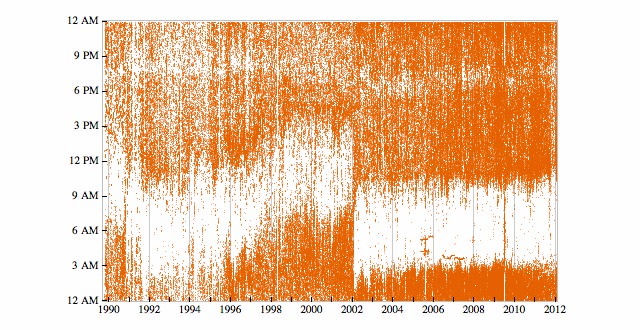
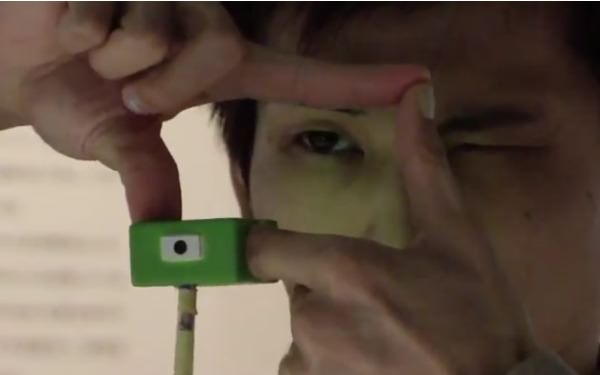 Researchers at the Institute of Advanced Media Arts and Sciences have created a prototype for a new type of camera called Ubi-Camera that lets you snap a photograph by creating a rectangle with your hands.
Researchers at the Institute of Advanced Media Arts and Sciences have created a prototype for a new type of camera called Ubi-Camera that lets you snap a photograph by creating a rectangle with your hands.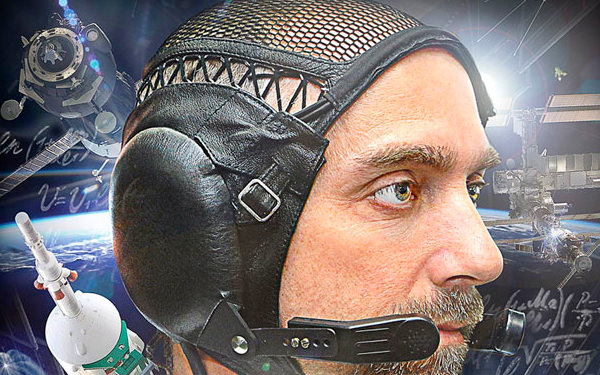
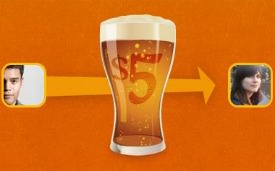 Buying someone a drink in person is a nice gesture, but buying someone a drink via Twitter is, well, not something you do often.
Buying someone a drink in person is a nice gesture, but buying someone a drink via Twitter is, well, not something you do often.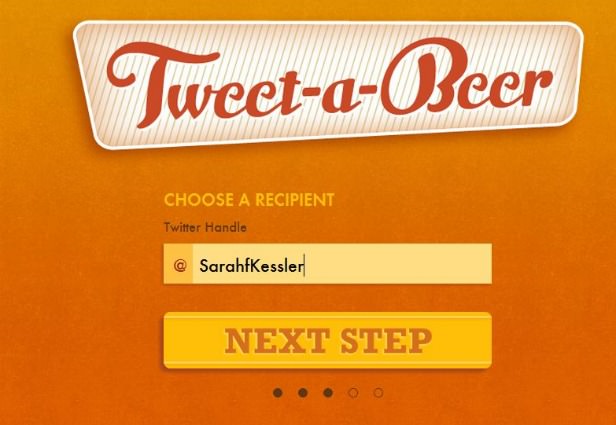
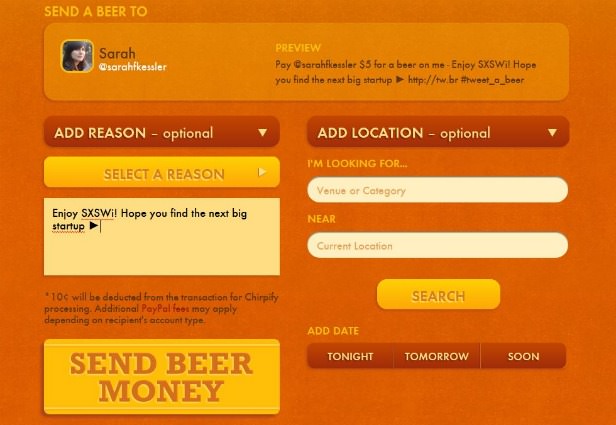
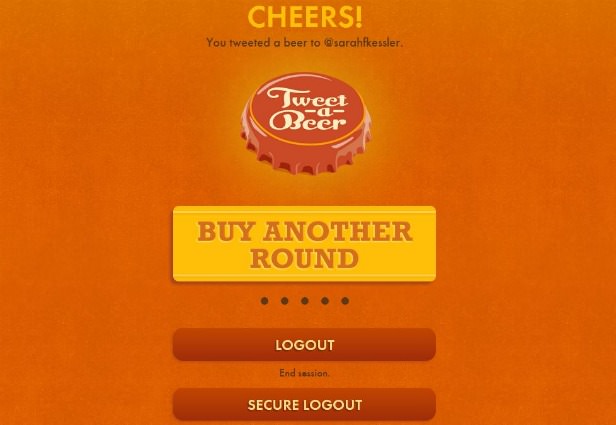
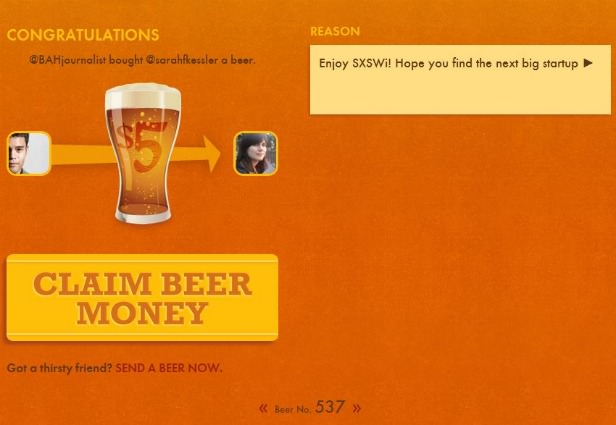
 The roads in Nevada are ready for driverless robot cars. Earlier this month, Nevada’s Legislative Commission approved testing of autonomous vehicles on the state’s roadways. The cars will be identifiable by a red license plate.
The roads in Nevada are ready for driverless robot cars. Earlier this month, Nevada’s Legislative Commission approved testing of autonomous vehicles on the state’s roadways. The cars will be identifiable by a red license plate.